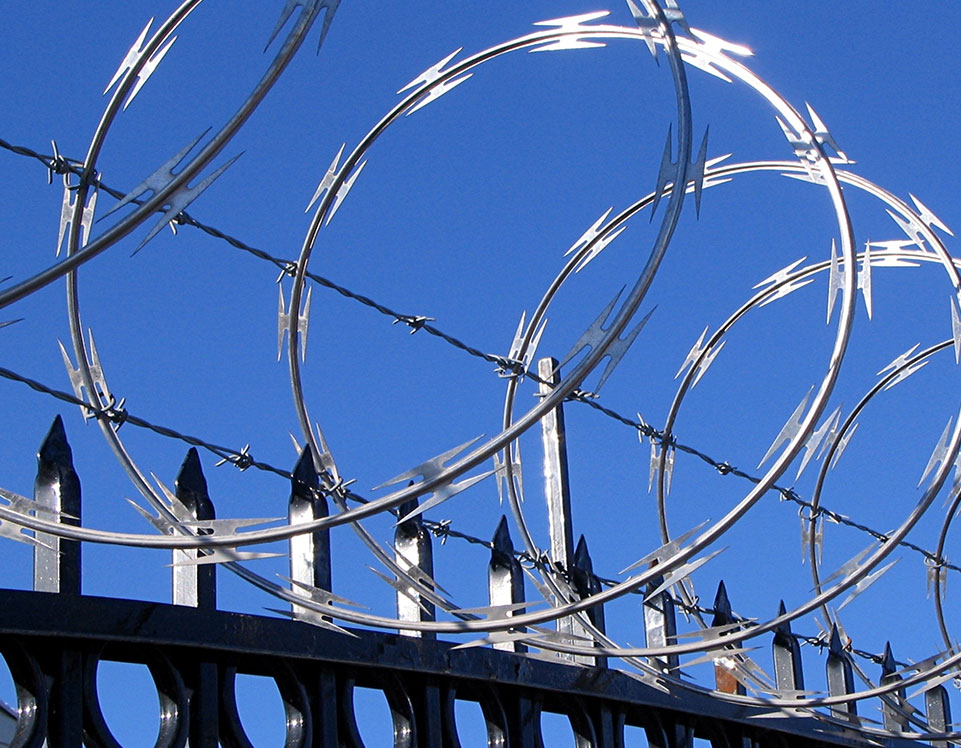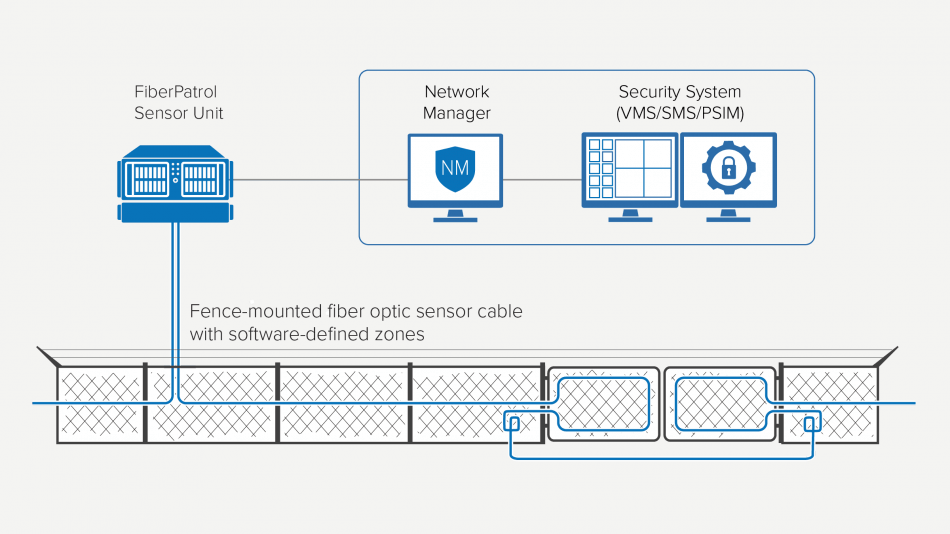Setting Up a Fiber Optics Infrastructure for Security Installations in Offices
Secure Your Residential Property With Dependable Fiber Optic Security Solutions
In an era where safety dangers are increasingly innovative, the need for effective security options is extremely important. Fiber optic protection systems stand out by using remarkable dependability and efficiency, leveraging sophisticated light transmission technology to improve surveillance abilities. security fibers. Recognizing the ins and outs of fiber optic protection can brighten the path to securing your residential property much more efficiently.
Advantages of Fiber Optic Protection
Fiber optic safety options provide a variety of advantages that make them progressively essential in today's electronic landscape. Among the most substantial advantages is their exceptional data transfer capability, which permits the transmission of large amounts of information over lengthy ranges without significant signal degradation. This capacity is specifically advantageous for safety systems that rely upon high-definition video clip monitoring and real-time monitoring.
Additionally, fiber optic cable televisions are inherently a lot more safe than traditional copper circuitry. They are immune to electro-magnetic disturbance, making them less susceptible to hacking or eavesdropping. This boosted safety and security is crucial for protecting sensitive data and keeping the integrity of monitoring systems.
Moreover, optical fiber are extra sturdy and resistant to environmental variables, such as dampness and temperature fluctuations, making certain lasting dependability and minimized upkeep expenses. The light-weight nature of fiber optic cords also simplifies installation processes, permitting for greater adaptability in system layout.
Just How Fiber Optic Systems Job
In modern safety applications, the operation of fiber optic systems counts on the principles of light transmission through adaptable glass or plastic fibers. These fibers are made to bring light signals over cross countries with minimal loss, making them suitable for transferring data connected to safety monitoring. The core of the fiber, bordered by a cladding material, makes certain that light signals stay contained within the core through a phenomenon called overall internal reflection.
When incorporated into protection systems, fiber optic cords can transmit data from numerous sensors, such as cams, motion detectors, and alarms, to a main tracking station. The high data transfer ability of fiber optics enables the transmission of big amounts of information at the same time, enabling real-time surveillance and prompt reaction to potential dangers.

Sorts Of Fiber Optic Security Solutions
Numerous sorts of fiber optic security remedies have actually emerged to boost monitoring and protection across different atmospheres. One prominent service is fiber optic boundary invasion discovery systems (PIDS), designed to monitor and safeguard home boundaries through the discovery of resonances and disruptions along fiber optic cables. These systems provide real-time notifies, making it possible for prompt responses to unapproved accessibility attempts.
One more efficient option is fiber optic video clip monitoring. This technology leverages high-definition cams connected through fiber optic wires to transfer video clip data over fars away without substantial loss of quality. This arrangement is particularly beneficial in extensive areas, such as airport terminals and commercial sites, where typical copper cables may fail.
Furthermore, fiber optic sensing units are significantly made use of for ecological monitoring, spotting adjustments in temperature level, stress, or acoustic signals that could indicate safety violations or hazardous problems. These sensors offer high level of sensitivity and accuracy, making them ideal for vital infrastructure protection.

Installation and Upkeep Tips
Effective installation and maintenance of fiber optic safety options are crucial for ensuring their ideal efficiency fiber optic security system and durability. To start with, it is important to prepare the setup meticulously, taking into consideration the design of the building and determining potential vulnerabilities. Fiber optic cable televisions must be directed securely, preventing sharp bends or twists that could jeopardize their stability. Make use of professional-grade connectors and rooms to make sure robust links and defense from environmental variables.
Throughout installation, it is advisable to conduct comprehensive screening of the system to confirm that all elements are working correctly. Routine maintenance checks ought to be scheduled to inspect the fiber optic cable televisions for any type of signs of wear or damages, as well as to guarantee that links continue to be protected. Cleaning the adapters occasionally is likewise vital to avoid signal loss as a result of dirt or debris.
Additionally, keeping an updated stock of set up components and their requirements can help with much easier troubleshooting and upgrades. By sticking to these installation and maintenance ideas, property owners can optimize the performance of their fiber optic security services, making certain a reputable protection against potential hazards.
Contrasting Expenses and Effectiveness
When assessing fiber optic security options, understanding the equilibrium in between prices and efficiency comes to be critical (security fibers). Organizations has to take into consideration the ahead of time investment, recurring maintenance costs, and the lasting worth these systems supply. While fiber optic systems may need a greater initial installment price compared to standard copper circuitry, their sturdiness and minimized sensitivity to electro-magnetic interference frequently equate to reduced upkeep prices gradually
Efficiency is one more essential factor; fiber optic security systems supply enhanced data transmission speeds and enhanced dependability. They can cover larger ranges without signal destruction, making them suitable for expansive buildings or remote places. Additionally, the high bandwidth ability sustains sophisticated safety and security applications, such as high-definition video security and real-time tracking, which are necessary for extensive security monitoring.
Inevitably, the option between cost and effectiveness ought to be assisted by specific protection needs and run the risk of evaluations. Organizations must evaluate their one-of-a-kind demands, taking into consideration aspects like building dimension, safety and security threats, and technical improvements. By conducting a thorough cost-benefit evaluation, stakeholders can make enlightened choices that line up with their safety goals while guaranteeing an audio financial investment in fiber optic technology.
Verdict
To conclude, fiber optic protection options offer substantial benefits in terms of efficiency, reliability, and resistance to environmental disturbances. These systems enhance surveillance capacities and perimeter safety and security, making them an efficient selection for comprehensive security. Although first installation prices might be higher, the long-term benefits, including lowered maintenance and exceptional performance, justify the investment. Eventually, the adoption of fiber optic technology stands for a forward-thinking technique to guarding homes against advancing safety hazards.